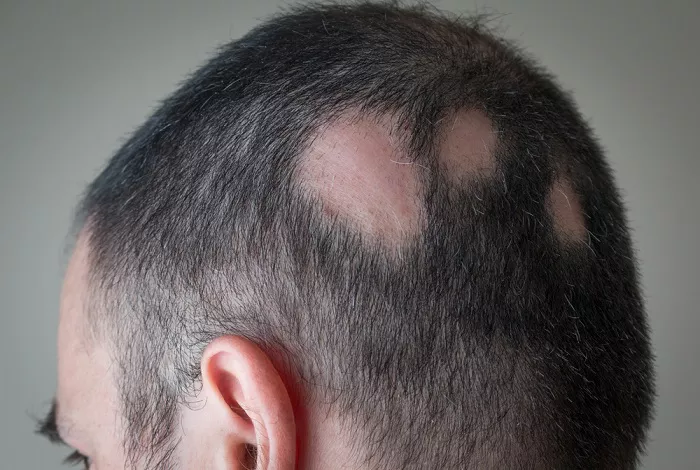Ringworm of the scalp, also known as tinea capitis, can be a distressing condition. It not only causes discomfort and an unsightly appearance but also raises concerns about hair loss. Many people worry whether their hair will grow back once the ringworm is treated. The good news is that in most cases, hair does grow back, but several factors come into play. In this article, we will explore these factors and what you can expect during the recovery process.
Understanding Ringworm of the Scalp
The Cause
Ringworm is a fungal infection caused by various species of dermatophytes. These fungi thrive in warm, moist environments and can easily spread from person to person or through contact with contaminated objects like combs, hats, or bedding. When the fungus infects the scalp, it invades the hair follicles and the surrounding skin.
Symptoms
The initial symptoms may include red, itchy patches on the scalp. As the infection progresses, the hair in the affected area may become brittle and break off easily, giving the appearance of bald patches. There may also be scaling, pustules, or a raised border around the infected area.
Treatment of Ringworm of the Scalp
Antifungal Medications
Topical Treatments: In some mild cases, topical antifungal creams or lotions may be prescribed. These are applied directly to the scalp and work by killing the fungus on the skin surface. However, for most cases of tinea capitis, topical treatments alone are not sufficient.
Oral Medications: Oral antifungal drugs are usually the mainstay of treatment. Medications like griseofulvin, terbinafine, or itraconazole are commonly used. These drugs are absorbed into the bloodstream and can reach the fungus within the hair follicles.
The duration of treatment can vary from several weeks to a few months, depending on the severity of the infection and the type of antifungal used.
Adhering to the Treatment Plan
It is crucial to complete the full course of antifungal treatment as prescribed by the doctor. Stopping the medication prematurely can lead to a recurrence of the infection. During treatment, it is also important to keep the scalp clean. Use a mild, antifungal shampoo as recommended by your healthcare provider. This helps to remove any fungal spores from the scalp and prevent the spread of the infection.
Hair Growth After Treatment
Hair Follicle Status
If the ringworm infection has not severely damaged the hair follicles, there is a high likelihood of hair regrowth. The hair follicle is the structure responsible for producing hair. In many cases of tinea capitis, the fungus mainly affects the hair shaft and the outer layers of the follicle. Once the fungus is eliminated, the follicle can resume its normal function of producing hair.
However, in some severe or long – standing infections, the fungus can penetrate deeper into the follicle and cause more significant damage. This can lead to scarring of the follicle. When a follicle is scarred, it may lose its ability to produce hair, resulting in permanent hair loss in the affected area.
Regrowth Timeline
In general, you may start to notice new hair growth within a few weeks to a few months after starting effective treatment.
Initially, the new hair may be very fine and short. Over time, it will grow thicker and longer. The speed of hair growth can vary from person to person. Factors such as overall health, diet, and genetics can influence how quickly the hair grows back.
It is normal to have some temporary differences in the texture or color of the new hair compared to the original hair. This is usually a result of the disruption of the hair growth cycle during the infection. With time, the hair should return to its normal appearance.
Encouraging Hair Growth
Proper Nutrition: Eating a balanced diet rich in vitamins, minerals, and proteins is essential for healthy hair growth.
Vitamins such as biotin, vitamin A, C, and E, as well as minerals like zinc and iron, play important roles in the hair growth process. Include foods like eggs, nuts, leafy greens, and fruits in your diet.
Avoiding Trauma: Be gentle with your scalp during the regrowth period. Avoid tight hairstyles that can pull on the hair and cause breakage. Use a wide – toothed comb to detangle the hair, starting from the ends and working your way up.
Moisturizing the Scalp: A healthy scalp is conducive to hair growth. Use a gentle, moisturizing conditioner or a natural oil like coconut oil to keep the scalp hydrated. This can help improve the condition of the scalp and support the growth of new hair.
Monitoring and Follow – Up
Checking for Recurrence
Even after the initial signs of ringworm have disappeared, there is a risk of recurrence. Keep an eye on the scalp for any signs of redness, itching, or new patches. If you notice any of these symptoms, contact your doctor immediately. It may be necessary to repeat the antifungal treatment or adjust the treatment plan.
Consulting a Doctor
If you have concerns about the rate of hair growth or if you notice any unusual changes in the scalp or hair during the recovery period, it is important to consult a dermatologist. They can examine your scalp, assess the condition of the hair follicles, and provide appropriate advice. In some cases, additional treatments or tests may be recommended to ensure optimal hair regrowth.
Conclusion
In most cases, hair will grow back after successful treatment of ringworm of the scalp. By following the prescribed treatment plan, taking care of your scalp and overall health, and closely monitoring for any signs of recurrence, you can increase the chances of full and healthy hair regrowth. While the process may take some time, patience and proper care are key to restoring your hair and your confidence.

